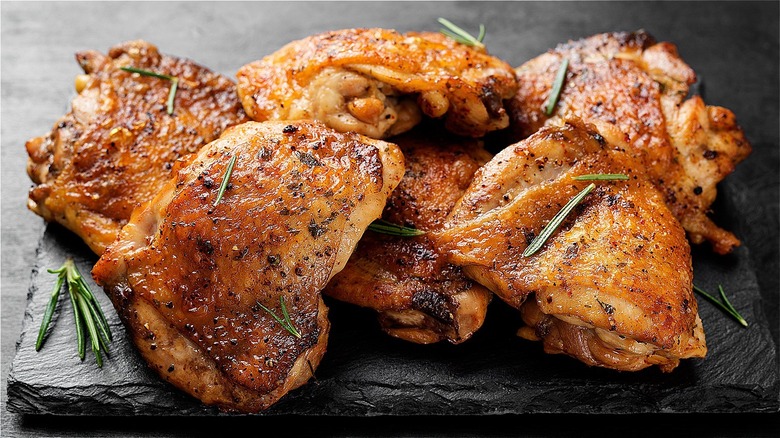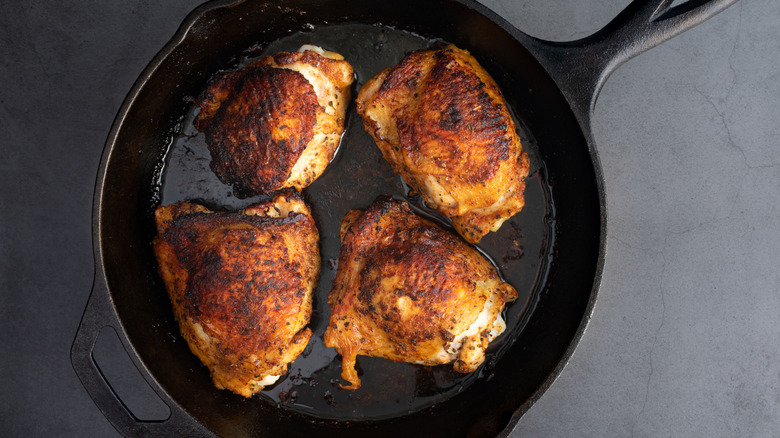The Two-Step Cooking Process That Always Results In Flavorful Chicken Thighs
Americans overwhelmingly favor white meat chicken over dark, which is surprising given chicken prices and the difference in taste. Although there is a textural difference between the two types of meat, white meat's popularity likely stems from it being leaner than dark. However, as the war on fat settles, more people are discovering the benefits of the fattier thigh over the perpetually dry chicken breast.
From an economic standpoint, white meat chicken is more expensive than dark. The national average for 1 pound of chicken breasts will currently set you back $2.58 versus $1.49 for chicken thighs. Bone-in, skin-on chicken of all types is usually cheaper than boneless varieties. Oddly, this makes the most flavorful cut of chicken — bone-in, skin-on, chicken thighs — the most inexpensive cut. A real win-win for home cooks.
The difference between white and dark meat comes down to how much myoglobin is present. Myoglobin is a protein that provides oxygen to the muscles and is responsible for the meat's reddish/brown color. Since chickens are flightless birds, legs and thighs need more of it. Meat with higher myoglobin is richer in nutrients, more flavorful, and darker in color as a result.
The most delicious chicken dishes begin with the best cut of meat and rely on proper cooking methods to coax out the most flavor. Try this two-step process for cooking chicken thighs and taste the difference.
Crispy skin chicken thighs
This two-step cooking process requires a 450-degree oven and an oven-safe skillet, like cast iron. The first step is to cook the chicken thighs on the stove, allowing the fat to render and the skin to crisp. The second step transfers the thighs to the oven to cook the meat thoroughly.
When cooking chicken, begin with the best quality ingredients — bone-in, skin-on organic chicken thighs. USDA regulations require organic chickens to be fed "100% organic feed and forage, and not administered antibiotics or hormones." The skin not only tastes delicious but also protects the meat from drying out, so whether or not you eat it, keep it on. Thigh bones contain marrow and fat, which help flavor the meat by imparting a richer, more umami-packed taste than boneless.
Begin by thoroughly drying the thighs with a paper towel before seasoning the chicken on all sides with kosher salt and pepper. Preheat the skillet over medium heat, then add a few tablespoons of olive oil. Once the oil has heated, place the chicken skin-side down into the skillet, and avoid overcrowding the pan. Overcrowding creates steam and prevents the Maillard reaction from occurring, resulting in soggy skin. Cook the chicken thighs for several minutes until the skin is uniformly golden brown and easily releases from the pan. Flip them and move the pan to the oven. Roast the chicken until a meat thermometer inserted into the meat, not the bone, registers 165 degrees.

